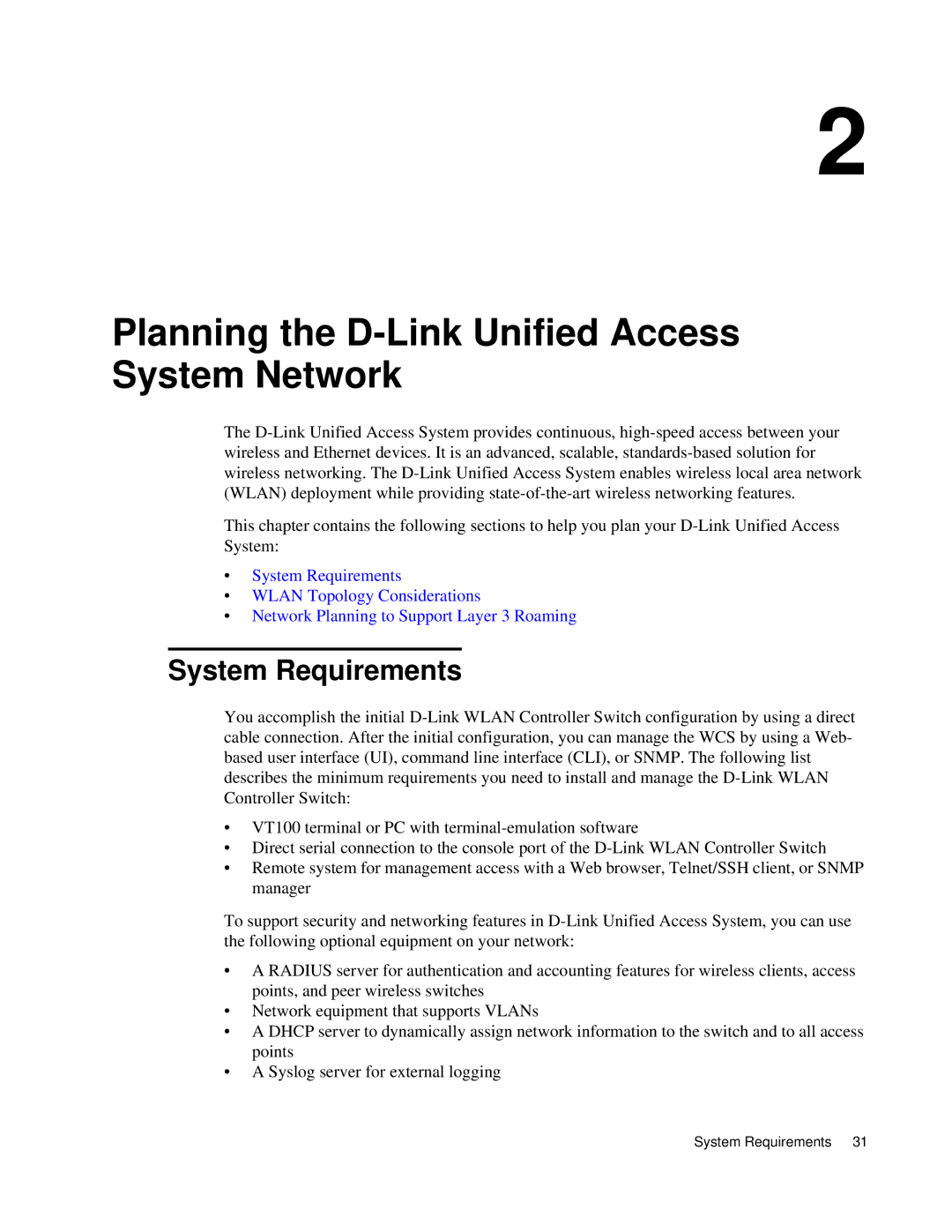2
Planning the D-Link Unified Access System Network
The
This chapter contains the following sections to help you plan your
•System Requirements
•WLAN Topology Considerations
•Network Planning to Support Layer 3 Roaming
System Requirements
You accomplish the initial
•VT100 terminal or PC with
•Direct serial connection to the console port of the
•Remote system for management access with a Web browser, Telnet/SSH client, or SNMP manager
To support security and networking features in
•A RADIUS server for authentication and accounting features for wireless clients, access points, and peer wireless switches
•Network equipment that supports VLANs
•A DHCP server to dynamically assign network information to the switch and to all access points
•A Syslog server for external logging
